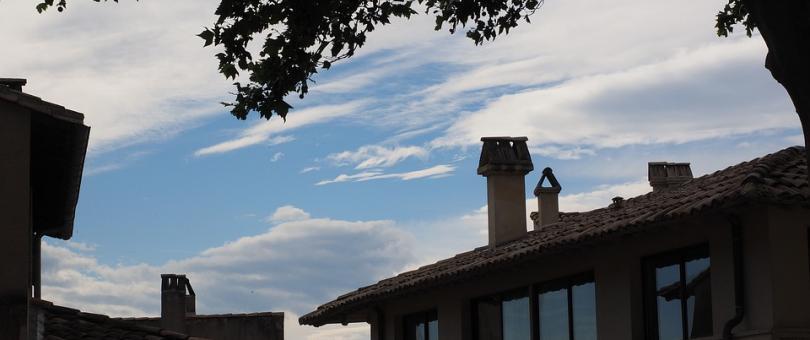How much do you know about roofing problems? A minor leak or a major hit due to the storm, do you know how to approach such damages and not cause additional damage in the roof repair process? If not, you need to read this post on roof repair tips every homeowner should know. It has all the information – detecting leaks, preventing dry rot, maintaining safety and strengthening the roof structure through vital maintenance. Grab a cup of coffee and start reading. You might not need these roof repair tips today, but they’ll come handy when you need these in future.
1. How to maintain safety during leak or damage detection?
First and foremost, you would want to figure out if there’s any problem with the roof. It maybe the massive storm that could have blown away your roof or just dripping water, you would want to know for sure if you need roof repair.
Don’t try any quick-fixes for roof leaks
But to be able to do all this, you’ll need to take safety precautions. Yes, it’s pouring outside, and you want to stop that leak right now, but it’s not the best course of action. You must wait until the rain stops. Remember that there are no quick-fixes for roof leaks. So, rushing to find a leak just when it happens isn’t a very good idea. Beware of slippery surface – it can also be the leaves and try to avoid walking on those as much as possible.
Don’t work alone
You must always have a buddy who can hold the ladder while you climb or be there in case of any mishappenings.
Use the ladder properly
Pick a sturdy ladder and get a ladder stabilizer or ask your buddy to hold it while you climb. If you have placed the ladder on the lawn or in the dirt, dig big holes to put it safely. For deck or porch, put a wooden board beneath the ladder to prevent it from slipping.
Remember to climb the ladder one step at a time while facing the ladder. Also, if you’re using a metal ladder, keep it away from electrical lines.
Wear safety equipment
You’ll need a safety harness, soft sealed rubber shoes, safety glasses and a hardhat. It is possible that you feel it’s too much equipment to get, but if you’re going to climb the roof and work on it, you better get the equipment or pay for a roof repair service to inspect the area for you. They can click the pictures as a proof for you.
2. What are the necessary precautions?
Once you get on the roof using a proper ladder and safety equipment, you’re still under the risk of falling or getting a major injury. At the same time, you can cause more damage to your roof than before.
You’re already aware of what safety equipment you require to climb the roof. In case, you decide to fix minor roof damage, and you have enough experience & information to do that, take these precautions while working.
Maintain a clean work area that’s free from distractions and power lines. Make sure you’re wearing the safety glasses while using the hammer. Be careful while hammering as improper use may make the nail fly and wallop you. It can also happen when you try to strike a steel hammer on another steel surface.
If you use equipment like a knife, make sure the blades are sharp. Also, understand that roof repair may require you to handle a lot of heavy material. Never lift anything using your back to prevent back injuries. Rather, use your legs.
3. How to detect a roof leak?
Fixing a leak isn’t as tough as finding one. It can cause major damage in the form of damaged ceiling and insulation, mold and rotted sheathings and framings. Even if it’s not causing you major discomfort, you should fix it right away (after waiting for proper weather conditions). There are three main ways to detect a roof leak.
1. If you have access to the attic, start looking for mold and discoloration with a flashlight. You will most likely find the problem with this method.
2. In case, you don’t have access to the attic or you’re unable to detect the leak with the first method, you’ll need to go to the roof and inspect it. Make sure you follow safety measures and precautions while doing that. Go to the roof and move the shingles to detect possible damage. Most of the times, leaks happen near the areas of penetration where vents or chimney is. Look at these regions.
3. If it’s still not visible, you’ll need to take a water pipeline and run the hose through the entire roof slowly. A helper would need to wait inside and look for water drops. When he checks this, he’ll be able to yell and tell you about the exact position of the leak.
You should be able to detect a roof leak with these three methods. If you fail or if you don’t want to do the tricky work involved in second and third point, you can ask a roofer to inspect your roof for possible leaks.
4. What’s the primary cause of roof leaks?
The leading cause of roof leaks is dirty gutters. Gutter cleaning is an essential activity, especially during fall, to ensure that your roof stays strong. We have written a very comprehensive guide on the importance of gutter cleaning. Do check it for additional reading on how clean gutters contribute to better roof health.
5. How to look for dry rot?
Dry rot is caused due to the fungus that apparently breeds due to moisture. Any areas of your roof that come in frequent contact with water stand a chance of getting affected by dry rot. Remember that it’s not the water that leads to this situation, it’s the moisture. Improper ventilation is the major cause of dry rot.
The fungus eats up the wood and causes structural damage to your roof resulting in sagging of the roof and cracking of the shingles. To detect it, you must look below the shingles and see if there’s any visible damage. In most affected areas, the wood will become soft and crack when you step on it. If you suspect major dry rot situation, don’t climb on the roof yourself. Have a roof repair company, equipped with proper knowledge, deal with this situation.
6. Inspect the roofing material
Damaged shingles present the most visible signs of roof damage. Loose shingles, missing shingles, and cracked shingles are itself a problem. Add to it the fact that these increase the chance of other issues like roof leaks, dry rot, and structural damage. The valleys of the roof are another spots that give away the visible signs of roof damage and also lead to more damage after getting affected themselves.
Remember that waiting for fixing roof issues is wise only if your roof is covered with snow or it’s pouring outside. You must get the issues fixed as soon as these conditions recede. Fall is a great time to have an annual inspection in case you suspect some roof damage.
I hope you found these roof repair tips helpful. In case, you have any more questions, feel free to ask below.


